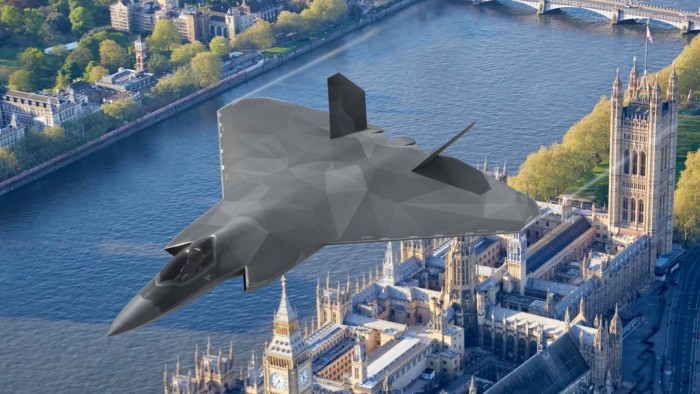Stay informed with free updates
Simply sign up to the Aerospace & Defence myFT Digest — delivered directly to your inbox.
The national defence champions of the UK, Italy and Japan have struck a deal to govern the production of a next generation fighter jet, as the three nations push forward their ambitious plan to have the aircraft flying by 2035.
Under the agreement signed in London on Friday, the three companies — Britain’s BAE System’s, Italy’s Leonardo and the Japan Aircraft Industrial Enhancement Co (JAIEC) — will each hold a 33.3 per cent share in the new group, giving them an equal degree of influence over the project.
JAIEC was set up this summer and is jointly funded by Mitsubishi Heavy Industries and the Society of Japanese Aerospace Companies.
The new venture, which will be based in the UK, will be accountable for the design, development and delivery of the next generation combat aircraft under the Global Combat Air Programme (GCAP). The industrial agreement follows the signing of a trilateral treaty between the three nations last year.
Unveiled in 2022, GCAP is one of the most ambitious military programmes ever attempted, aimed at expanding each nation’s defence capabilities to address rising security threats from Russia and China.
The companies’ three chief executives all welcomed the formation of the company. Charles Woodburn, chief executive of BAE, said it would “bring together the significant strengths and expertise of the companies involved”.
The agreement comes as government officials from the three countries have been discussing the idea of bringing Saudi Arabia into GCAP, despite strong resistance from Tokyo.
Riyadh has been urging the UK, Japan and Italy to allow it to become a full partner in GCAP. However, people familiar with the discussions have said the Gulf state could join as a “plus one” partner consisting of purely financial participation and providing early orders for the fighter jet, rather than becoming a fully fledged participant.
British defence secretary John Healey said earlier this month the UK was willing to consider allowing Saudi Arabia to “develop their links to join” the programme. Healey said there had been “detailed discussions between the four nations for some time” but stressed “there’s more work to do”.
Hiroshi Umino, a JAIEC staff member, said the joint venture partners were currently studying how big an initial capital injection to make and staffing numbers, but the participation of any other countries would be a decision for the trio of governments.
“We see it as an extremely big step forward that we’ve come together as one company to properly make decisions and manage GCAP,” he told the Financial Times.
Umino added that Japan decided to participate through JAIEC since the nation has industrial expertise outside of Mitsubishi Heavy Industries to contribute and it intends to transfer technology gained through the programme to several companies.
Roberto Cingolani, chief executive of Leonardo, similarly said a decision on the inclusion of other partners was one for the governments.
“I am not unfavourable to new partnerships,” he told the FT. “As long as there are more resources, more synergies and we open more markets, it is beneficial to all of us.”
The joint venture, expected to be set up by the middle of next year, will subcontract the development and manufacture of the aircraft to the respective industrial partners in each country.
The exact split of the design and development still has to be agreed, but it will be shared equally between the three nations. The exact manufacturing allocation will be allocated at a later date when more is known about the volumes of aircraft each country will procure.
The companies are expected to secure a manufacturing contract from the governments next year.
The partners aim to deliver the supersonic jet in roughly half the time, and therefore at less cost, than previous generation aircraft such as the Eurofighter Typhoon, although some analysts remain sceptical. To meet the ambitious timetable, the three companies have been investing heavily in digital design and innovative engineering methods. Using digital modelling will help engineers on the project to collaborate on the design and identify problems earlier.
Read the full article here

